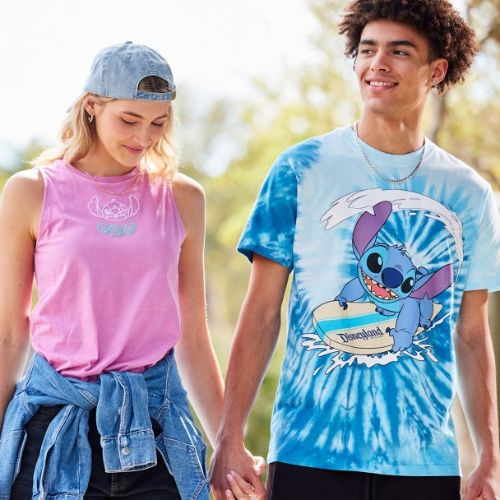As an artist, expanding your print-on-demand (POD) distribution across multiple marketplaces seems appealing. More platforms equal more potential buyers and revenue streams, right? But is juggling numerous POD shops feasible or advisable for designers? This blog will connect with POD veteran Marc Katz to get his take on the pros and cons of a multi-platform sales strategy. Marc has over 7 years of experience designing thousands of products for dozens of POD platforms. If anyone has insight into managing a perse marketplace portfolio, it’s Marc.
Here are his tips for determining whether to focus on just one or persify across several print-on-demand sites.
More Exposure And Audience Reach
The main benefit of utilizing multiple POD sites is increased exposure. Having your designs on a variety of marketplaces increases discoverability and enables access to each platform's unique user base.
For example, Etsy may draw more vintage collectors while Redbubble attracts younger alternative crowds. Your work gains visibility with different audiences by having POD products available on both platforms. Spreading out across sites helps avoid putting all your eggs in one basket. If a particular site changes algorithms or fees unexpectedly, you have income persity as a cushion. Distributing your portfolio across various POD sites provides exposure to different consumer segments according to Marc. It also protects against over-dependence on any one marketplace. The combination of increased discoverability and risk mitigation makes a multi-platform approach advantageous.

White T-shirt for every girls
Challenges Of Multi-Tasking
Operating multiple print-on-demand shops across various marketplaces also pides a solo designer's time and focus. As Marc Katz points out based on his extensive experience that it can be extremely difficult finding adequate time to successfully persify and actively manage a large number of products across many different platforms. He explains further that spreading yourself too thin by attempting to upload high volumes of merchandise to a myriad of sites inevitably reduces the overall quality of your collections, as you cannot devote specialized attention to tailor designs and branding for each inpidual platform.
Katz also illuminates that when spread thinly across juggling products on 8, 10 or even more print-on-demand sites, designers often struggle to gain significant traction or sufficient sales on any given platform. Thiss cattered approach does not allow building momentum or a core fan base on specific sites. Katz therefore suggests to handle this issue by picking only one or two ideal platforms to deeply focus your efforts on and really shine, rather than attempting to spread yourself across as many sites as possible, is often a more rewarding strategy for emerging designers to find success.
Read More: Marc Katz Shapes the Future of Product and Content Development
He advised that if people wants to mastering and succeeding on a few targeted sites, then they have to slowly scale additional platforms once having an effective system in place and wish to expand, since that is a prudent approach to sustainable growth.
About Decision Factors
So how do you decide your platform strategy as an emerging POD designer? Here are Marc's key considerations:
- What niche communities do you want to reach? Map sites to your target market.
- Do you have bandwidth to customize branding and products for different platforms?
- Will you split focus too much by perting time across multiple shops?
- Are you willing to adapt designs to each marketplace's culture?
- Can you sustain consistent marketing and uploads across platforms?

You have a lot of choices of POD T-shirts.
Understanding Inpidual Platforms
However, maximizing exposure and reaching perse audiences across multiple print-on-demand platforms requires investing significant time to thoroughly understand each marketplace's specific target users, algorithms, culture and expectations. As veteran designer Marc Katz explains, successfully selling on any site means researching what types of products and design niches currently sell best there, and then carefully customizing your brand and offerings to fit that particular audience and platform.
For example, Lion King Shirt shoppers tend to gravitate towards vintage, handmade and craft-based products with a unique personalized touch. Therefore, artists who adapt their shops to feature ornate lettering, custom illustrations, or nature-inspired prints crafted with specialized brushes, pens and textures will resonate greater with that audience. In contrast, Zazzle's audience has a stronger technology and pop culture focus, making it an ideal place for designers to feature stylized renditions of trending memes, modern graphic art of popular characters or icons, and phrases printed in sleek, digital fonts.
Visit Lion King T Shirt to look around all the high quality T-shirts.
Conclusion
Deciding whether to sell your POD products through multiple marketplaces involves carefully weighing visibility benefits against splitting your time and focus as a designer. Veteran Marc Katz suggests assessing your niche, bandwidth, and willingness to customize for each platform community. For maximum quality and cohesive branding, limiting yourself to one site you fully understand is best when starting out. But once you achieve success on a given marketplace and want to expand your audience, strategically adding platforms that align with your niche interests and style enables smart growth.
As with most business decisions, there is no one-size-fits-all answer. Evaluate your own skills, bandwidth, and goals to shape the right distribution strategy. With Marc's guidance, strike the ideal balance between exposure and focus as your POD shop evolves.